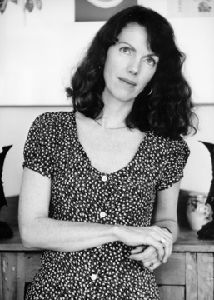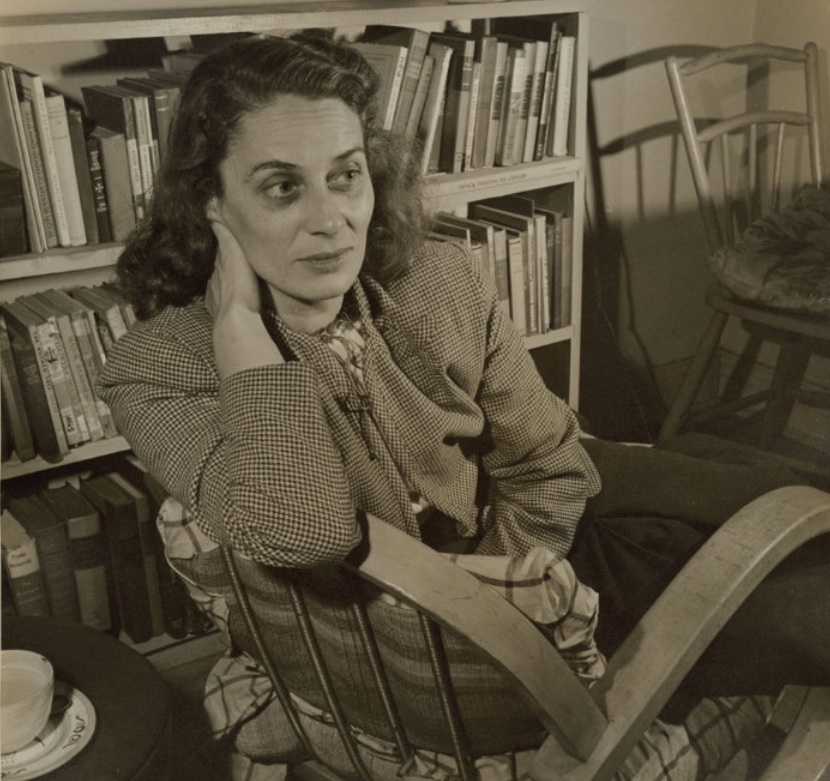Alice Munro (nee Laidlaw), short story writer (born 10 July 1931 in Wingham, Ontario; died 13 May 2024 in Port Hope, ON). Alice Munro is widely regarded as one of the greatest writers of fiction in the English-speaking world. Renowned as one of the best short story authors of all time, she became the first Canadian to win the Nobel Prize for literature in 2013. She won three Governor-General’s Literary Awards, two Giller Prizes, three Trillium Book Awards and the Man Booker International Prize for lifetime achievement. She also received the Canada-Australia Literary Prize, the Commonwealth Writers' Prize (Canada and the Caribbean), the Rogers Writers' Trust Fiction Prize and three O. Henry Awards for continuing achievement in short fiction, among many other honours. In 2024, Munro’s youngest daughter revealed that she had been sexually assaulted as a child by Munro’s second husband and that Munro chose to stay with and protect him despite knowing about the abuse.

Early Life and Career
Munro spent her early years within the small town culture of western Ontario. She began writing in her teenage years and published her first story, “The Dimensions of a Shadow,” when she was 19.
After meeting her first husband, James Munro, at the University of Western Ontario, she moved with him to Vancouver after completing two years at Western. Their move to Victoria in 1963 resulted in the founding of the bookstore, Munro's Books, and more importantly, the acclaimed appearance of Munro's first collection of stories. Her work had previously appeared in Canadian literary journals (Tamarack Review, Canadian Forum) and on the CBC radio program Anthology, whose producer, Robert Weaver, played a major role in the acceptance of her early work. Munro remarked in interviews that she focused on the short story early on simply because she was taking care of two daughters before the age of 30.
The end of Munro's marriage in 1973 prompted her return to Ontario and, in 1974, to the University of Western Ontario, this time as the writer-in-residence. She married Gerald Fremlin, whom she had known since her university years, in 1976. The couple settled on a farm outside of Clinton. Her numerous and award-winning collections of short stories, set mostly in southern Ontario, have made the "Munro Tract" (bounded on the west and south by Lakes Huron and Erie, on the north by the town of Goderich, on the east by London) as resonant a country of the mind as William Faulkner's Yoknapatawpha County or Tolkien's Middle Earth.

Characteristic Traits
Numerous critical studies have acknowledged Munro's mastery of the cultural and vocal tones of a region; her acuteness in delineating social class is now a critical commonplace. Munro often narrates her stories in a manner reflecting the outlooks of her relatively unsophisticated characters. They appear before us as if we had bumped into them at the mall or the hairdresser's or the home and school meeting, relating their experiences in ways that the author then uses to reveal deeper meanings. Her amplitude of style and approach, it is often noted, give her short stories the moral density of lengthier novels.
Munro's craft exerts a radial power, in which a central motif or situation mutates or recurs throughout various contexts within a story, often concluding with a reflection upon experience that seems anything but definitive. Munro's is the fiction for a culture in which the nostalgia for lost certainties seems as potent as the unshakeable realization of that loss. Written within the conventions of literary realism, her fiction reflects the preoccupations of figures who must remain satisfied with momentary illumination rather than life-changing revelations. Her international audience finds its own uncertainties and concerns paralleled in those that shape her characters' experiences. Time spent in re-reading her stories is seldom wasted.
Two representative stories, "Meneseteung" (in Friend of My Youth) and the title story in The Love of a Good Woman, display Alice Munro's skill at depicting — then questioning and redefining — the experiences of her characters. Both offer accounts of women engaged, however unwittingly, in processes of self-definition that can take the form of wary hesitation in the face of new prospects, a process concluding in understanding rather than happiness.
Almeda Joynt Roth of "Meneseteung" — based remotely upon obscure 19th-century women writers in the Munro Tract — must shatter the mirror of her nostalgic historical poetry when faced with the hard facts of sex and blood. Jarvis Poulter, a commercial pillar of the town, has made some tentative gestures toward Almeda. Her distress at his casual disregard toward a lower-class female victim of male violence leads her to deflect his overtures. The story-within-the-story concludes with Almeda enduring the start of her menstrual period, under the influence of a painkiller, reconciled to an unprotected, unmarried destiny that will not end well. The tale's intrusive yet distant narrator makes the story's meaning more complex with an admission of her own inability to grasp exactly what has taken place in Almeda's sensibility.
Uncertainty also marks the conclusion of Munro's "The Love of a Good Woman," whose protagonist Enid lingers in suspense as the male who has attracted her interest approaches. Is he propelled by desire, or by malice? The story opens with the discovery of a local optometrist's automobile, along with his body, sunk beneath the river. The reader — who already knows that someone donated the optometrist's gear to the local museum — learns a version of what lies behind the death by water, and the effect of this knowledge upon Enid. Her role as caregiver for a dying "bad" woman, the unreliable tale-bearing of that dying woman, and the power this woman's husband exerts over Enid's refined sensibilities leads to the question that ends the story. Such a tale, with its unabashed usage of such formula-fictional devices as the mysterious death of one character, the reluctant romantic involvement of the nurse and the inscrutability of the male figure, displays Munro's powers as a fiction writer. The story's progression through layers of consciousness and association, alongside the delicate architecture of the story's telling, demonstrates how Munro can net both literary and general readers within her audience.
It is tempting for Canadian readers to focus upon Munro's usage of specifically Canadian spaces and times. Munro's soundest achievement as a fiction writer, however, lies in her power to express what her characters experience as a more or less permanent condition of uncertainty and ambivalence. Her skill lies in rendering these layers of consciousness in the idiom of her time and place and conveying them in deceptively simple fashion.
Later Years
From the mid-1970s, Munro began her long-standing relationship with the New Yorker magazine, substantially expanding her audience in North America and beyond. Her work has been translated into 20 languages. Each of her new books typically sold better than the preceding one.
Munro announced her retirement after the publication of The View from Castle Rock in 2006. But her books continued to appear at roughly the same pace, with Too Much Happiness in 2009 and Dear Life in 2012. Munro’s second husband died in April 2013. She then divided her time between Clinton, Ontario, and Comox, British Columbia. Robert Thacker's literary biography Alice Munro: Writing Her Lives appeared in 2005.
Notable Works
Alice Munro’s published works include: Dance of the Happy Shades (1968), Lives of Girls and Women (1971), Something I've Been Meaning to Tell You (1974), Who Do You Think You Are? (1978), The Moons of Jupiter (1982), The Progress of Love (1986), Friend of My Youth (1990), Open Secrets (1994), The Love of a Good Woman (1998), Hateship, Friendship, Courtship, Loveship, Marriage (2001), Runaway (2004), The View from Castle Rock (2006), Too Much Happiness (2009) and Dear Life (2012). Her work has been widely anthologized; several collections have also appeared.
Adaptations
Various adaptations of Alice Munro’s stories have appeared on television. Away from Her (2006), directed by Sarah Polley, is a noteworthy film version of Munro's “The Bear Came Over the Mountain,” from her 2001 collection Hateship, Friendship, Courtship, Loveship, Marriage. The short film based on “Boys and Girls” starred Megan Follows and won an Oscar in 1984. Hateship Loveship (2013), starring Kristen Wiig and Guy Pearce, was based on the story “Hateship, Friendship, Courtship, Loveship, Marriage.” Pedro Almodóvar’s Julieta (2016) was inspired by several stories in Runaway.
Personal Life and Shocking Revelations
Alice Munro was married to James Munro from 1951 to 1972. They had four children together: Sheila (born 1953), Catherine (1955; died from kidney failure the day she was born), Jenny (1957) and Andrea (1966). After the divorce, Munro moved back to Ontario in 1973. Her children continued to live in Victoria with James and his second wife, Carole, and her son Andrew. Munro married cartographer and geographer Gerald Fremlin in 1976 and lived with him on a farm near Clinton, Ontario.
In July 2024, Munro’s youngest daughter, Andrea Skinner, published an article in the Toronto Star revealing that she had been sexually assaulted by Fremlin when she was visiting her mother in 1976, when she was nine years old and Fremlin was in his 50s. She wrote that Fremlin continued to make sexual advances toward her during subsequent summer visits, including repeatedly exposing himself to her, until she was in her teens.
Skinner told her stepbrother and stepmother about the abuse shortly after it first happened. They informed her father, who instructed the family not to tell Munro. Skinner told her mother of the abuse in 1992, when she was 25 and suffering from bulimia, insomnia and constant migraines. But she wrote that Munro “reacted exactly as I had feared she would, as if she had learned of an infidelity…. She said that she had been ‘told too late,’ she loved him too much, and that… whatever had happened was between me and my stepfather. It had nothing to do with her.” Fremlin admitted to the abuse but blamed it on Skinner, calling her a “homewrecker” and saying that the nine-year-old “invaded my bedroom for sexual adventure.” Skinner also wrote that her mother “told me about other children Fremlin had ‘friendships’ with, emphasizing her own sense that she, personally, had been betrayed.”
In 2005, Skinner reported the abuse to police. Fremlin pleaded guilty to a charge of indecent assault and was sentenced, without trial, to two years probation. But Munro remained married to Fremlin until his death in 2013 at age 88. Skinner ended her relationship with Munro around 2002 and did not reconcile with her before her death in May 2024.
The abuse was an open secret in Skinner’s family for decades, as well as in the relatively small world of Canadian literary publishing. After Skinner’s article was published, Robert Thacker, Munro’s biographer, told the Toronto Star that Munro had spoken to him about Skinner’s abuse years earlier. He said she knew the story would come out eventually. He also said, “I knew this day was going to come, I just didn’t know when.”
Honours and Awards
- Governor General's Literary Award for English-language Fiction (Dance of the Happy Shades) (1968)
- Canadian Booksellers Award (Lives of Girls and women) (1971)
- Canada-Australia Literary Prize (1977)
- Governor General's Literary Award for English-language Fiction (Who Do You Think You Are?) (1978)
- Governor General's Literary Award for English-language Fiction (The Progress of Love) (1986)
- Marian Engel Award, Writers' Trust of Canada (1986)
- Trillium Book Award (Friend of My Youth) (1991)
- Foreign Honorary Member, American Academy of Arts and Letters (1992)
- Lorne Pierce Medal, Royal Society of Canada (1993)
- WH Smith Literary Award (Open Secrets) (1995)
- Lannan Literary Award for Fiction (1995)
- PEN/Malamud Award for Excellence in Short Fiction (1997)
- National Book Critics Circle Award (The Love of a Good Woman) (1998)
- Giller Prize (The Love of a Good Woman) (1998)
- Trillium Book Award (The Love of a Good Woman) (1999)
- Fiction Book of the Year (The Love of a Good Woman), Libris Awards (1999)
- Author of the Year, Libris Awards (1999)
- Rea Award for the Short Story (2001)
- Rogers Writers' Trust Fiction Prize (Runaway) (2004)
- Scotiabank Giller Prize (Runaway) (2004)
- Medal of Honor for Literature, US National Arts Club (2005)
- Edward MacDowell Medal, MacDowell Colony (2006)
- O. Henry Award (“Passion”) (2006)
- O. Henry Award (“What Do You Want to Know For”) (2008)
- Man Booker International Prize (for lifetime body of work) (2009)
- Chevalier, Ordre des arts et des lettres, France (2010)
- O. Henry Award (“Corrie”) (2012)
- Trillium Book Award (Dear Life) (2013)
- Nobel Prize in Literature (2013)
- Silver coin issued in honour of Munro's Nobel Prize, Royal Canadian Mint (2014)
- Postage stamp issued in honour of Munro's Nobel Prize, Canada Post (2015)

 Share on Facebook
Share on Facebook Share on X
Share on X Share by Email
Share by Email Share on Google Classroom
Share on Google Classroom










